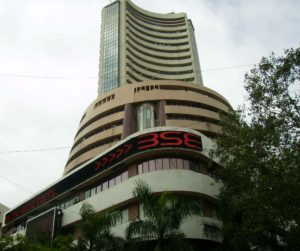Mixed signals from Indian economy
The rupee has continued its slide, hitting new lows everyday of this week. However, the stock markets continue to reach new peaks almost everyday. Can the contra movement in these two key indices of the health of economy continue forever?
If the economy were a human, then its health could be gauged by just a handful of parameters, besides growth rate – notably its currency, the stock markets and inflation. The three do tend to move in a tandem and if there is a serious mismatch, it is cause for concern and needs serious attention.
However, if a doctor were to examine the health of Indian economy by looking at these three parameters, the results would be extremely confusing. While inflation has been rising and the value of the rupee has been sliding, the stock markets have continued to rise, as if in a total disconnect with the macroeconomic factors.
The fall in the rupee is perhaps the most worrying. In the last 12 months, the Indian currency has lost nearly 10 pc in value in comparison with the USD, reaching an all time low level of nearly INR 71 to the dollar, as against just under INR 64 to the dollar in September 2017.
A weak currency is not necessarily a terrible thing for an economy as it makes exports much more competitive. But while it may be relatively good news for an export-dominated economy like Germany or China, it is extremely worrying for a net-importer like India, whose trade deficit stood at almost USD 100 billion in 2016.
And the fall in the rupee is bound to send the deficit ballooning this year as it makes all imports more expensive. The biggest item in India’s import basket is crude oil, which accounted for nearly USD 61 billion or about 18 pc of all Indian imports in 2016.
The deficit is set to rise this year mainly due to two factors. First is the sharp rise in crude oil prices that are now hovering around USD 70 per barrel. Secondly the fall in the rupee makes every barrel additionally 10 pc more expensive, increasing the deficit in rupee terms.
Higher crude oil prices, coupled with a bigger trade deficit, will also impact inflation, which came dangerously close to the 5 pc mark in June, compared to 3.6 pc a year ago. While currently, it is hovering around 4.3 pc, it is still above the 4 pc inflation target set by the Reserve Bank of India (RBI).
Higher inflation is bound to lead to a further rise in interest rates as the RBI has already hiked them twice over the last six months. This is bad news for credit growth in the Indian economy, a key fuel for companies. Credit growth rates have barely managed to recover from the historic lows following the demonetisation in November 2016. Rising interest rates are bound to dampen further recovery in credit growth. Also, higher interest rates, coupled with high inflation, would negatively impact consumer confidence and consumption, which could pull the economy in a vicious downward spiral.
But the mood in Dalal Street, home to Asia’s oldest stock exchange, the Bombay Stock Exchange (BSE), seems as cheerful as a child headed to Christmas shopping. The BSE Sensex, the benchmark stock index, has been hitting record highs practically everyday for the past one year. Sensex has gained almost 61 pc since the Narendra Modi government took charge, rising from a touch above 24,000 points to nearly 39,000 points now.
The price to earning ratio of the Sensex is hovering close to 24, up from over 17 in 2014, making it one of the most expensive markets to buy in.
Despite the economic headwinds, rising inflation and relatively high PE ratios, the stock markets continue to remain healthy, with combined market capitalisation of companies listed on BSE having doubled to the current INR 159 trillion or USD 2.3 trillion.
Though the GDP growth projections remain healthy, looking at the national elections less than nine months away, the government could easily be tempted into populist trap and loosen the fiscal discipline further, besides going slow on reforms. Stock market punters would do well to take note of these factors before going on yet another wild bull run.










